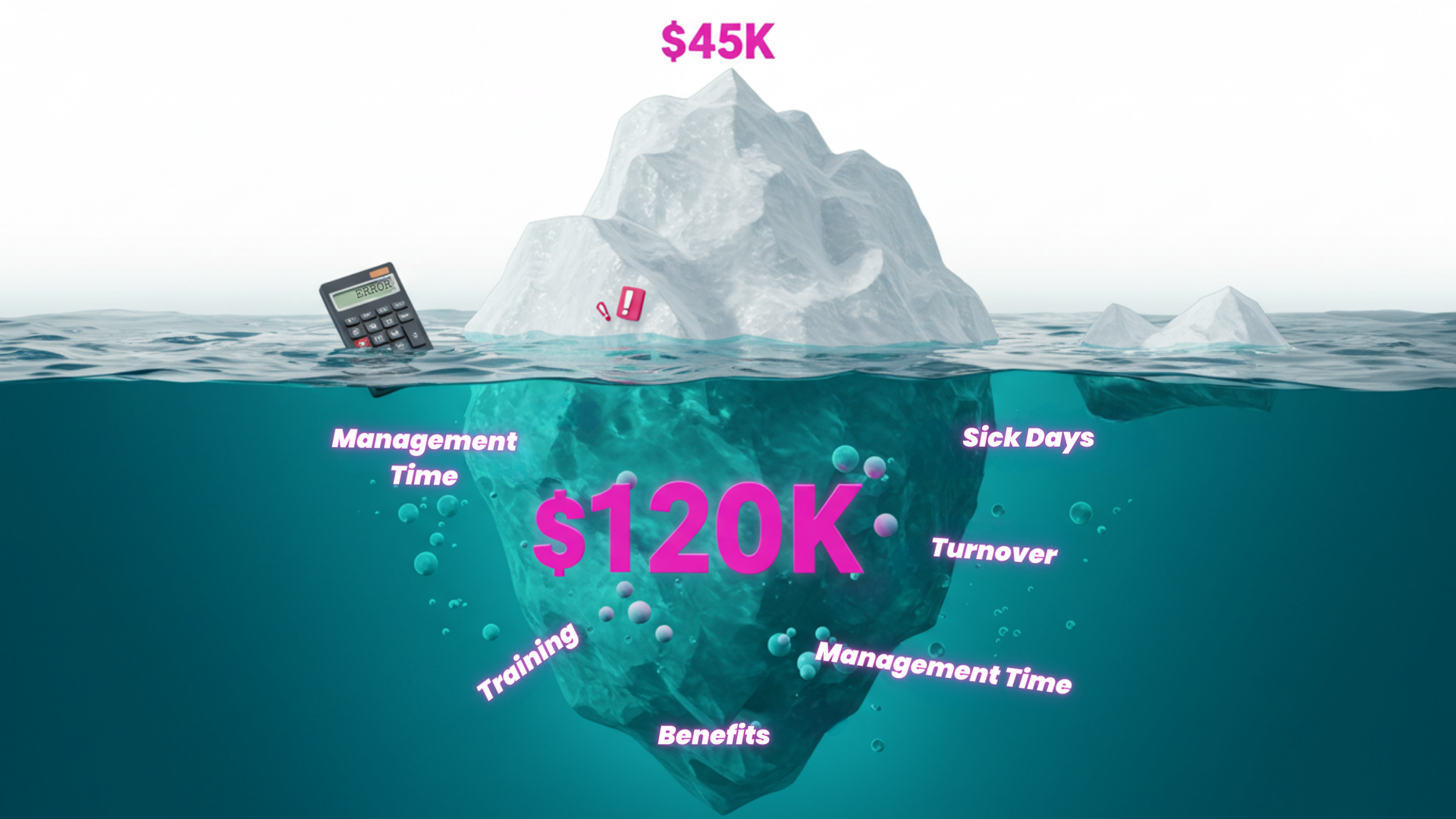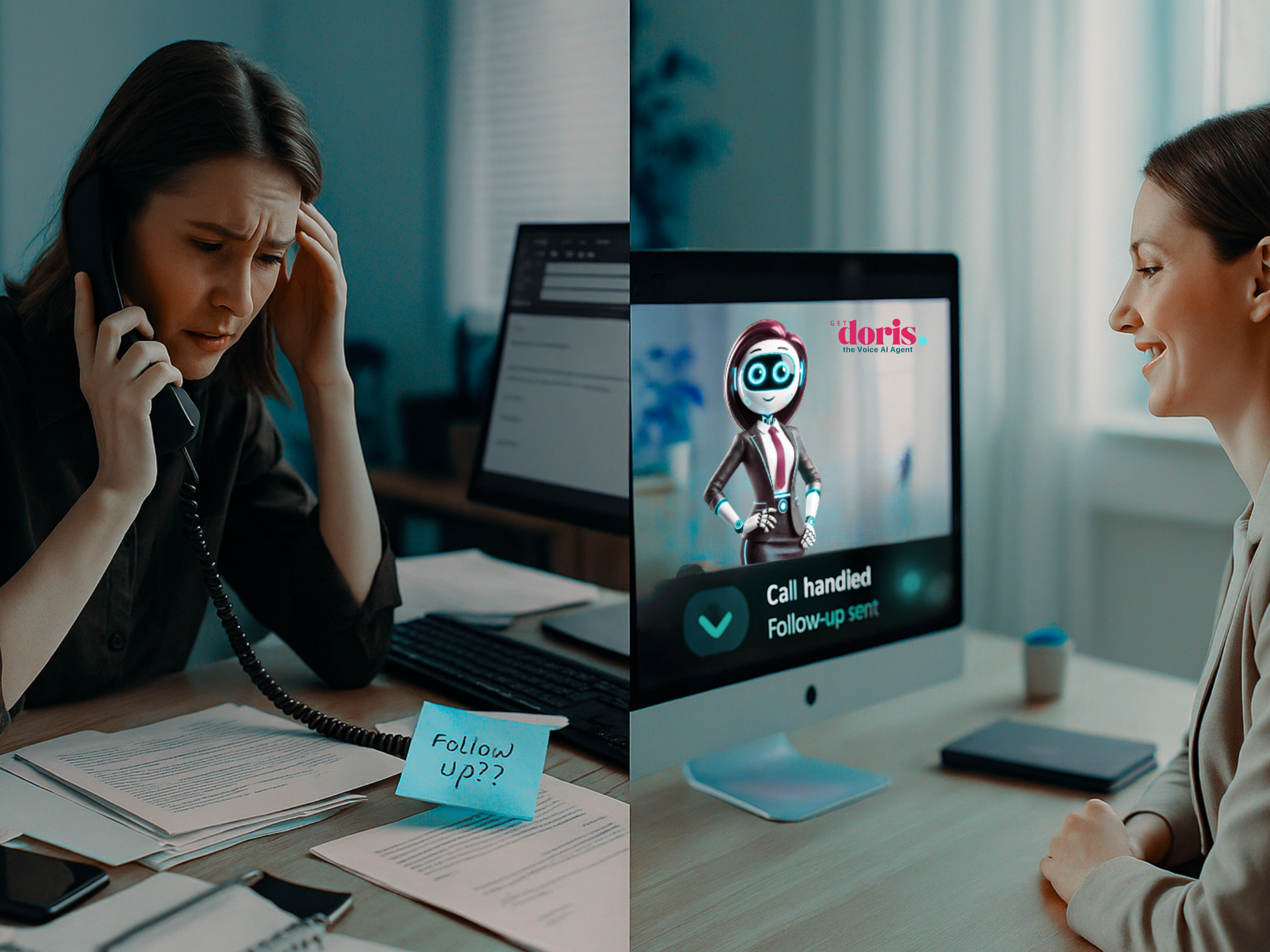The Review Revolution
How Smart Businesses Get Consistently Great Feedback Without Begging
"They just forgot to ask me for a review."
That's what the customer told me when I called to find out why they hadn't left feedback after their exceptional experience with my client's business. They weren't unhappy. They were actually delighted with the service. They simply weren't asked at the right time, in the right way.
It's a scenario playing out in thousands of businesses every day. Great experiences happening, satisfied customers walking away, and golden review opportunities vanishing into thin air. Meanwhile, the unhappy customers? They seem to find their way to your Google Business Profile without any prompting whatsoever.
The result is a review profile that looks like a roller coaster—a few glowing 5-stars, the occasional devastating 1-star, and vast empty spaces where your happy customers should be speaking up. It's inconsistent, unpredictable, and actively damaging your business growth.
If this sounds familiar, you're not alone. And more importantly, it's not your customers' fault. It's a system problem.
In this post, I'll show you why most businesses struggle with inconsistent online reviews, the true cost of a haphazard approach to reputation management, and how forward-thinking companies are using Doris's automated review generation to create a steady stream of authentic positive feedback without awkward asks or constant reminders.
Why Great Businesses Get Inconsistent Reviews (It's Not About Service Quality)
Let's start with a truth that might feel uncomfortable: the quality of your customer reviews often has little correlation with the quality of your customer experience.
I recently worked with a healthcare provider who delivered genuinely exceptional care. Their patient satisfaction surveys showed 96% of patients were "very satisfied" with their experience. Yet their Google reviews averaged just 3.7 stars, with long gaps between positive reviews and the occasional scathing 1-star standing out prominently.
What was happening?
The problem wasn't service quality—it was review generation mechanics. And this same pattern plays out across nearly every industry.
There are four fundamental reasons even great businesses struggle with consistent positive reviews:
First, there's the motivation asymmetry. Unhappy customers are self-motivated to write reviews. They're emotional, they want to warn others, and they seek the catharsis of sharing their frustration. Happy customers, meanwhile, are already satisfied. They've gotten what they wanted and moved on with their lives. They need external motivation to take the additional step of writing a review.
A study by the Review Trackers found that customers are 21% more likely to leave a review after a negative experience than a positive one. Without a system to overcome this natural asymmetry, your reviews will always skew more negative than your actual customer experience.
Second, there's the timing problem. There's a narrow window when customers are most likely to leave a review—typically within 24 hours of their experience, while the details are fresh and their feelings are strong. Miss this window, and the likelihood of getting a review drops dramatically with each passing day.
A restaurant owner I worked with discovered that customers asked for a review immediately after dining left feedback 68% of the time. When asked the next day, that number dropped to 21%. By the third day, it was below 4%. The experience hadn't changed—just the timing of the request.
Third, there's the friction factor. Even willing customers abandon the review process when it involves too many steps, confusing instructions, or technological hurdles. Every click, every field to fill out, every moment of confusion dramatically reduces completion rates.
A professional services firm found that simplifying their review process from seven steps to three increased their review completion rate by 340%. The customers' experiences hadn't changed at all—just the ease of sharing feedback.
Finally, there's the ask inconsistency. In most businesses, requesting reviews is handled inconsistently across different team members, locations, and channels. Some customers are asked enthusiastically, others timidly, and many not at all. This human variability creates massive gaps in review coverage.
A multi-location business discovered that one location had 4.8 stars across 112 reviews, while another with nearly identical customer satisfaction scores had just 3.9 stars across 28 reviews. The difference wasn't service quality—it was simply that the first location's manager was more consistent and effective in asking for reviews.
When we combine these factors, we see why review generation is fundamentally a system challenge rather than a service quality issue. Without addressing the structural problems in how reviews are requested, even exceptional businesses will struggle with inconsistent online feedback.
The Hidden Costs of Inconsistent Reviews (They're Bigger Than You Think)
Most business owners understand that reviews influence potential customers. But few fully grasp just how dramatically review inconsistency impacts their bottom line.
I recently helped a home services business analyse the true cost of their inconsistent review profile. They had been hovering between 3.8 and 4.2 stars for years, with long gaps between reviews and the occasional negative feedback prominently displayed. They viewed this as a minor marketing issue.
What we discovered shocked them.
Through careful analysis of their conversion data, we found that their inconsistent reviews were:
- Driving away an estimated 37% of high-intent prospects who visited their Google Business Profile
- Forcing them to discount their services by 12-18% compared to better-reviewed competitors
- Increasing their customer acquisition costs by 43% across all marketing channels
- Preventing them from ranking in the valuable "Local Pack" for high-value search terms
- Creating a negative first impression that their sales team had to overcome, lengthening their sales cycle by an average of 3.4 days
In dollar terms, their review inconsistency was costing them approximately $212,000 annually in lost revenue and increased marketing costs—despite delivering service that their existing customers rated as excellent in direct surveys.
This isn't unusual. The research on review impact is clear:
A Harvard Business School study found that each one-star increase in a business's rating corresponds to a 5-9% increase in revenue. More importantly, businesses with consistent recent positive reviews commanded price premiums of up to 16% compared to those with spotty review histories.
Research from BrightLocal revealed that 82% of consumers are less likely to use a business after seeing negative reviews, with 92% stating they would not contact a business with ratings lower than 4 stars. Perhaps most critically, 86% of consumers consider reviews older than 3 months irrelevant—meaning that even if you have good historical reviews, you need a continuous stream of fresh positive feedback.
The impact on search visibility is equally significant. Google has confirmed that review quantity, quality, and recency are significant factors in local search rankings. Businesses with consistent recent positive reviews are dramatically more likely to appear in the valuable "Local Pack" search results—the top three businesses Google displays for local searches.
Beyond these direct costs, inconsistent reviews create less tangible but equally damaging impacts:
They undermine team morale, as staff who deliver great experiences see their efforts unrecognised or, worse, overshadowed by the occasional vocal dissatisfied customer.
They create anxiety about new business, as you never know whether a potential client has seen your best or worst reviews.
They force you into reactive crisis management when negative reviews appear, drawing resources away from proactive business growth.
And perhaps most insidiously, they create a permanent record of your worst moments while failing to document your countless successful customer interactions.
As one business owner put it: "We serve hundreds of happy customers every month, but you'd never know it from our online reviews. Instead, we look exactly like our mediocre competitors who provide genuinely inconsistent service."
Why Traditional Review Generation Approaches Keep Failing
If you've tried to solve the review consistency problem before, you've likely attempted one or more common approaches—and discovered they each have significant limitations.
The most basic approach is simply asking customers in person to leave a review. While personal requests can be effective, they're inherently inconsistent. Some staff are comfortable asking, others aren't. Some remember, others forget. Some customers say yes but don't follow through. And there's often no follow-up mechanism to gently remind those who intended to leave a review but didn't get around to it.
A retail business found that despite training all staff to request reviews, only 23% of transactions actually included a review request. Even when customers were asked and agreed, only about 30% actually completed a review. The combined effect: less than 7% of their happy customers were leaving reviews.
Many businesses try sending manual review requests via email or text after purchase. This improves on in-person requests but introduces new challenges. Sending these messages consistently requires someone to trigger each request. Timing is often delayed due to other priorities. There's typically no intelligent follow-up for those who don't respond to the initial request. And most critically, these requests often go to all customers regardless of their experience, inadvertently soliciting negative reviews from those who had issues.
A professional services firm tried this approach and inadvertently sent review requests to several clients who had experienced service delays. The result was a cluster of negative reviews that significantly damaged their online reputation—all because their manual system couldn't identify which clients were appropriate for review requests.
Some businesses invest in generic review management software. While better than completely manual approaches, these tools typically still require significant human intervention to operate effectively. They rarely integrate with your operational systems to intelligently time requests based on actual customer experiences. They don't adapt review requests based on customer interactions. And they frequently lack the intelligent follow-up capabilities that dramatically improve review completion rates.
A hospitality business using a popular review platform found they were still only capturing reviews from about 14% of their satisfied customers—better than their previous 3%, but far from the consistent review generation they needed to reflect their actual customer satisfaction levels.
The most concerning approach is when businesses resort to review manipulation—offering incentives, selectively requesting reviews only from visibly happy customers, or even creating fake reviews. Beyond the obvious ethical issues, these approaches create legal and platform risks that can be devastating if discovered.
A business owner sheepishly admitted: "We got desperate and asked our friends and family to leave reviews. It helped briefly, but now we're paranoid about getting caught and losing all our reviews. Plus, it did nothing to create a sustainable flow of genuine feedback."
All these approaches share a common flaw: they treat review generation as a separate, manual marketing task rather than an integrated, automated extension of the customer experience. This fundamental disconnect ensures they'll always be inconsistent, inefficient, and ultimately ineffective.
The Doris Solution: Automated Review Generation That Actually Works
The businesses that solve the review consistency challenge don't do it through more aggressive asking or manual follow-up. They implement Doris's automated review generation system that makes capturing positive feedback a natural extension of a great customer experience.
Here's how Doris transforms the review generation process:
AI creates intelligent timing for review requests based on actual customer interactions and satisfaction signals. Instead of sending review requests on a fixed schedule, AI monitors customer engagement patterns, identifies when positive experiences have occurred, and automatically triggers review requests at the optimal moment for each specific customer.
A healthcare provider implemented AI and discovered that patients who completed treatment successfully and had positive follow-up communications were 340% more likely to leave a review when asked immediately after expressing satisfaction, compared to the practice's previous approach of sending review requests on a fixed 7-day schedule after the final appointment.
Doris uses multi-channel, frictionless request methods that meet customers where they are. Some customers respond best to text messages, others to email, and still others to in-app notifications. Doris automatically selects the optimal channel for each customer based on their communication patterns and makes leaving a review as simple as possible with direct links, clear instructions, and minimal steps.
A professional services business that implemented AI with a multi-channel approach saw their review completion rate increase from 11% to 67% simply by matching the request channel to each client's preferred communication method and simplifying the review process.
Doris provides intelligent, non-annoying follow-up for those who don't respond to initial requests. Instead of either sending no reminder (and losing the review) or sending generic reminders that feel like spam, Doris uses behavioural triggers to determine who would be receptive to a gentle nudge and automatically provides contextually relevant follow-up at the optimal time.
A retail business found that AI's intelligent follow-up system generated an additional 43% of reviews from customers who didn't respond to the initial request—without creating the negative experience that comes from excessive or poorly timed reminders.
Doris integrates review generation with your operational systems, creating a closed loop between customer experience and feedback. Customer interactions, purchase history, support tickets, and other operational data inform the review request timing and approach, ensuring that requests go to the right customers at the right time.
A service business using AI discovered that customers who had their issues successfully resolved after an initial problem were actually their most enthusiastic reviewers when approached correctly—a segment they had previously avoided asking for fear of negative feedback.
Perhaps most importantly, Doris provides review response and management tools that turn reviews into conversations rather than one-way feedback. Every review—positive or negative—receives a prompt, personalised response that shows both the reviewer and potential customers that you're actively engaged with your clients' experiences.
A hospitality business that implemented an AI response system found that their thoughtful replies to negative reviews actually became a positive selling point, with new customers specifically mentioning that seeing how the business handled problems gave them confidence in booking.
What Effective Review Generation Looks Like with Doris
Let's look at how the review generation process transforms with Doris's automated system.
Before implementing Doris, a typical business's review process might look like this: Customer experiences are inconsistently tracked, if at all. Review requests happen sporadically, often through manual email blasts sent on a fixed schedule regardless of individual customer experiences. Many happy customers never receive a request. Some unhappy customers receive poorly timed requests that result in negative reviews. There's little or no follow-up for those who don't respond initially. And there's typically a significant delay in responding to reviews that do come in.
After implementing Doris, the review process becomes a seamless extension of the customer experience: Doris automatically identifies positive customer experiences through integration with your operational systems. It triggers personalised review requests at the perfect moment for each individual customer. It uses their preferred communication channel to minimise friction. It provides intelligent, non-annoying follow-up for those who don't initially respond. And it helps you respond quickly and effectively to both positive and negative reviews, turning feedback into meaningful conversations.
From the customer's perspective, the difference is equally significant. Before Doris, they might complete a purchase or service, have a great experience, and never be asked for feedback—or be asked weeks later when the details have faded. The request, when it comes, often feels generic and may require multiple complex steps to complete.
With Doris, they receive a personalized request at the moment they're feeling most positive about their experience. The request comes through their preferred communication channel with clear, simple instructions. Completing the review takes seconds rather than minutes. And they receive a thoughtful response to their feedback, creating a complete communication loop that strengthens their relationship with your business.
A business owner who transformed their review generation with Doris described the change: "Before, getting reviews felt like pulling teeth. We were constantly reminding staff to ask, following up manually, and still getting inconsistent results. Now it's completely automatic—we deliver great service, and the reviews follow naturally. Our online reputation finally matches the actual experiences we provide every day."
Five Key Principles for Review Generation Success
Through working with hundreds of businesses implementing automated review generation, we've identified five core principles that maximise results:
- Timing trumps persistence. Asking at the perfect moment is far more effective than asking repeatedly. Doris identifies these moments through behavioural triggers and satisfaction signals.
- Channel matching matters. Customers are most likely to leave reviews when asked through their preferred communication method. Doris automatically selects the optimal channel for each customer.
- Simplicity drives completion. Every additional step reduces review completion rates by 20-30%. Doris creates the most frictionless path possible for each review platform.
- Personalisation increases response. Generic requests feel like marketing; personalised requests feel like conversation. Doris customises each request based on the specific customer experience.
- Response completes the loop. Responding to reviews (both positive and negative) increases future review rates by 12-16%. Doris helps you respond quickly and effectively to all feedback.
Ready to Transform Your Online Reputation?
If your business is delivering great experiences but struggling with inconsistent online reviews, Doris's automated review generation system offers a proven solution.
The best part? Most businesses see significant improvements within the first 30 days, with their online reputation beginning to reflect their actual customer satisfaction rather than the skewed sample that typically finds its way online.
Ready to see how Doris could transform your specific reputation management challenges? Book a personalised demonstration that shows exactly how our system would integrate with your business operations.
We'll analyze your current review profile, identify your biggest reputation gaps, and show you how Doris can help you create a consistent stream of positive online feedback that accurately reflects the quality you deliver every day.
After all, you're already creating great customer experiences. Isn't it time your online reputation showed it?

















